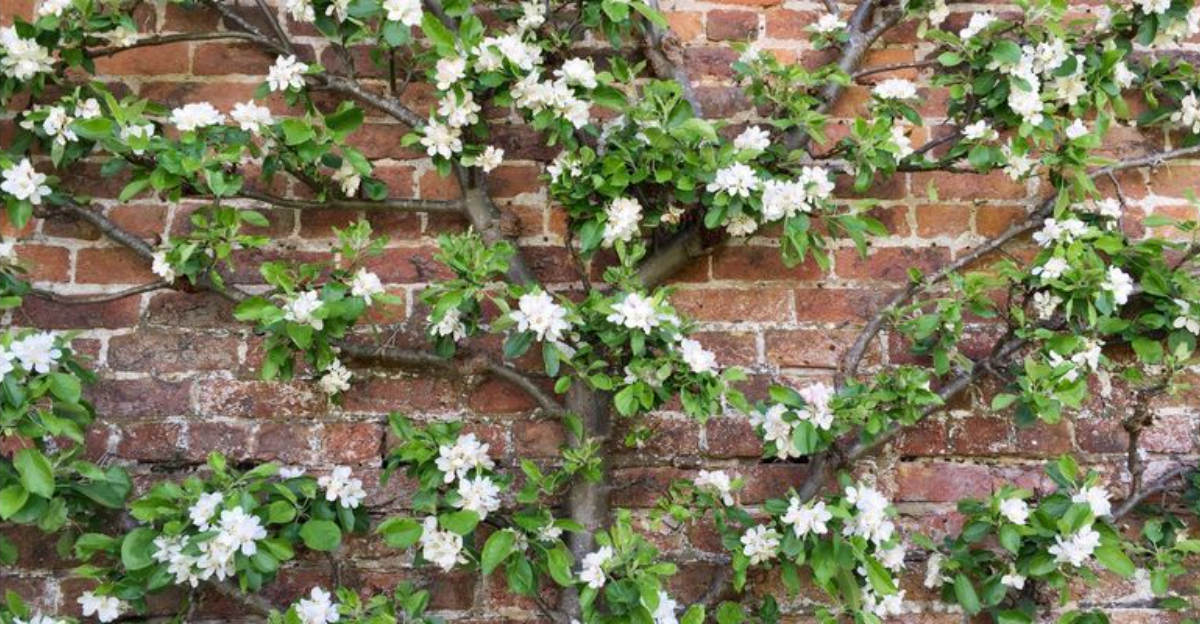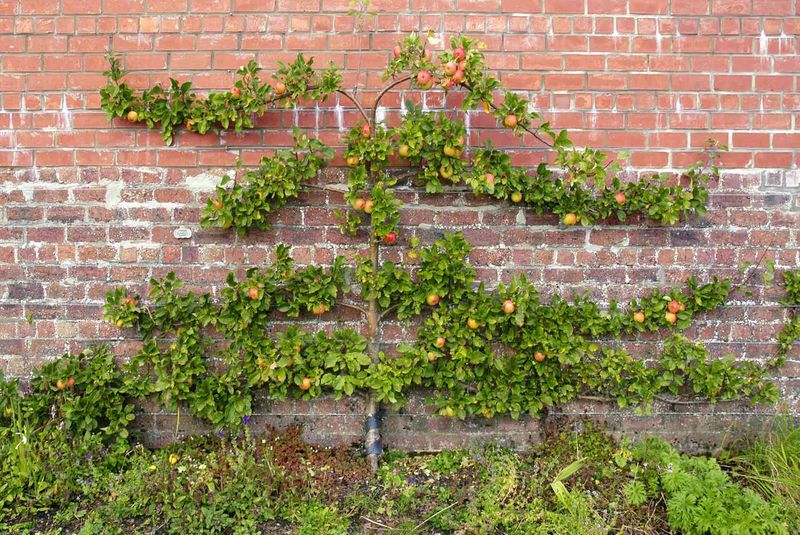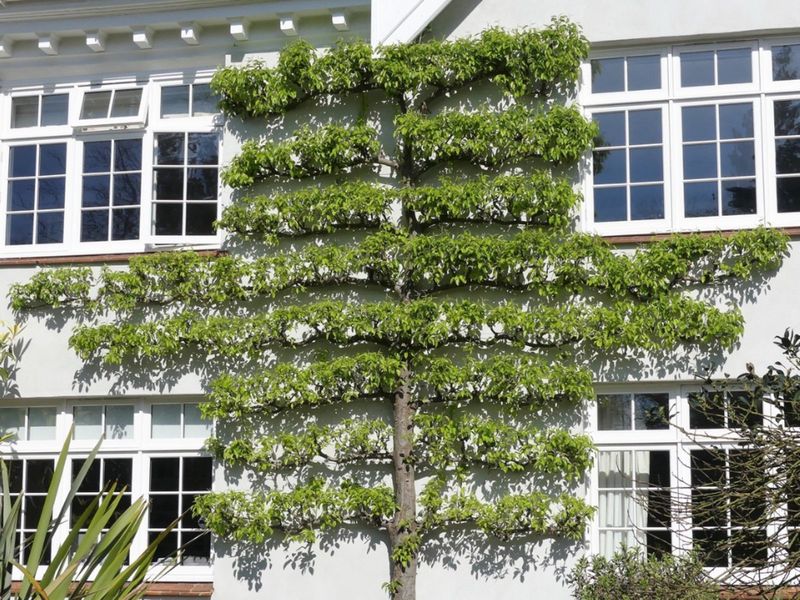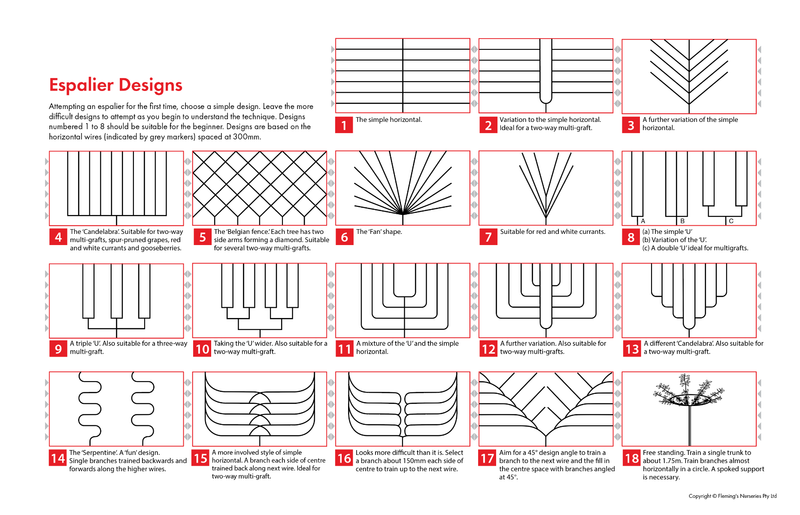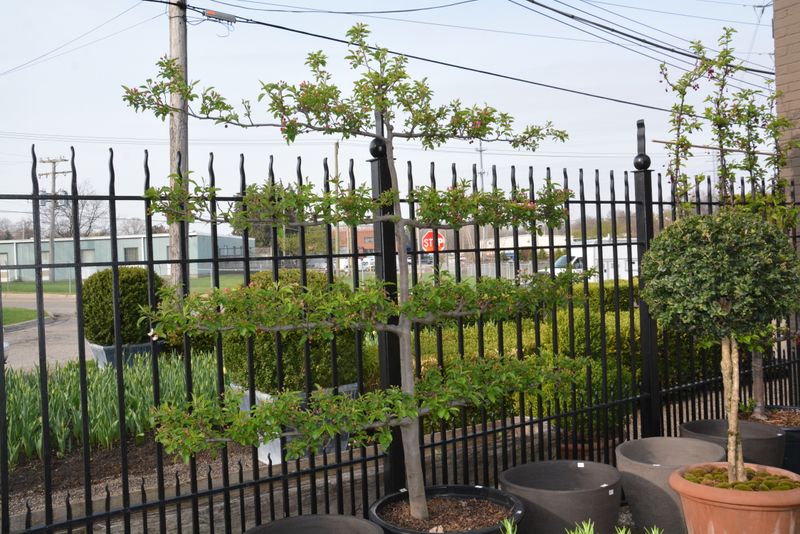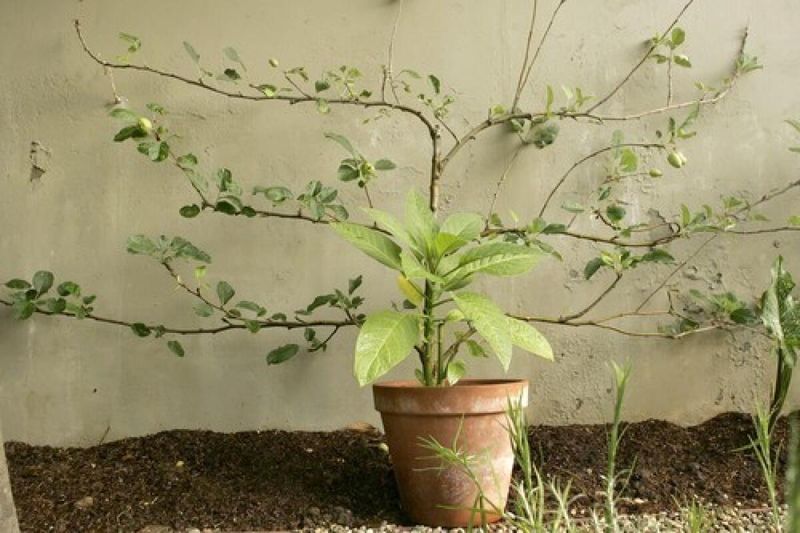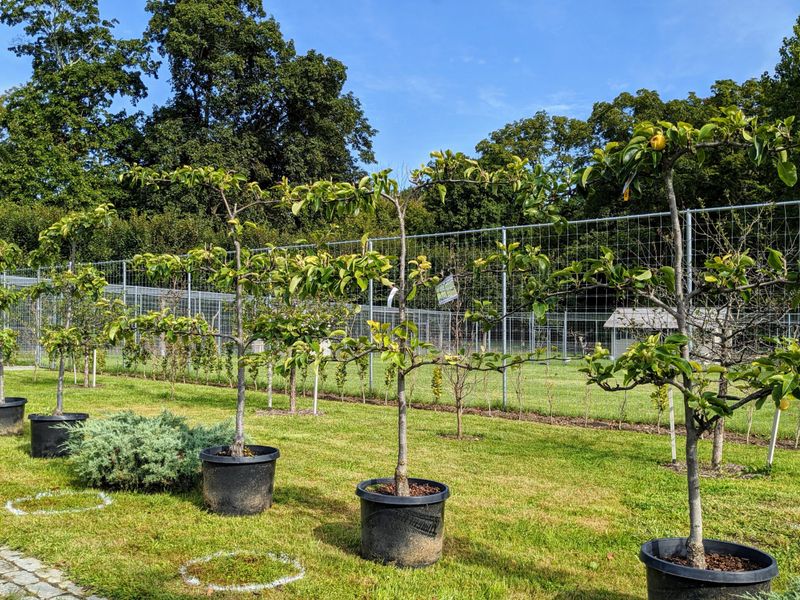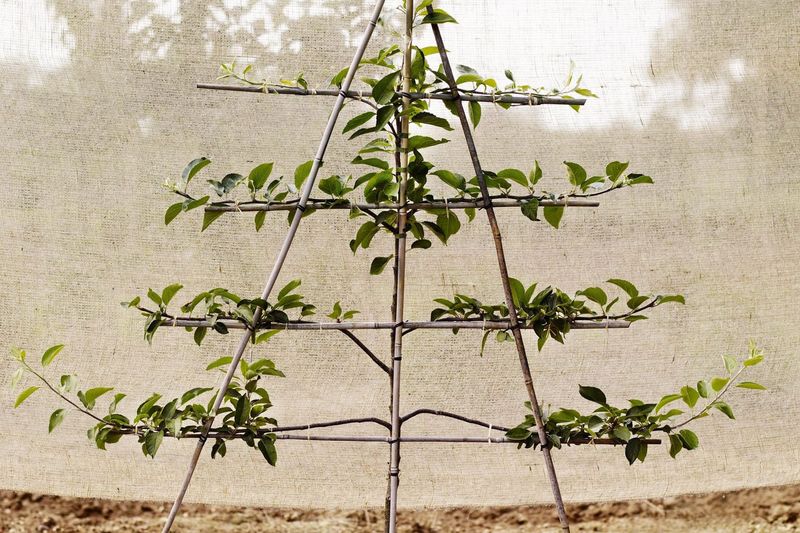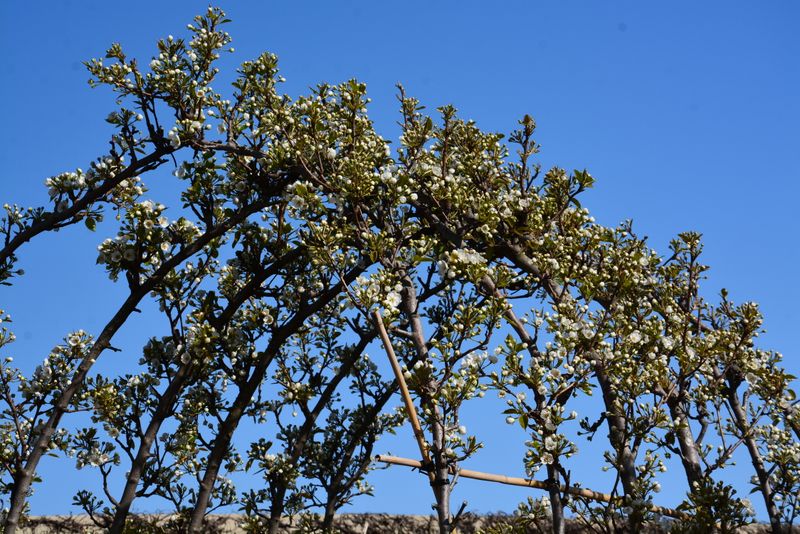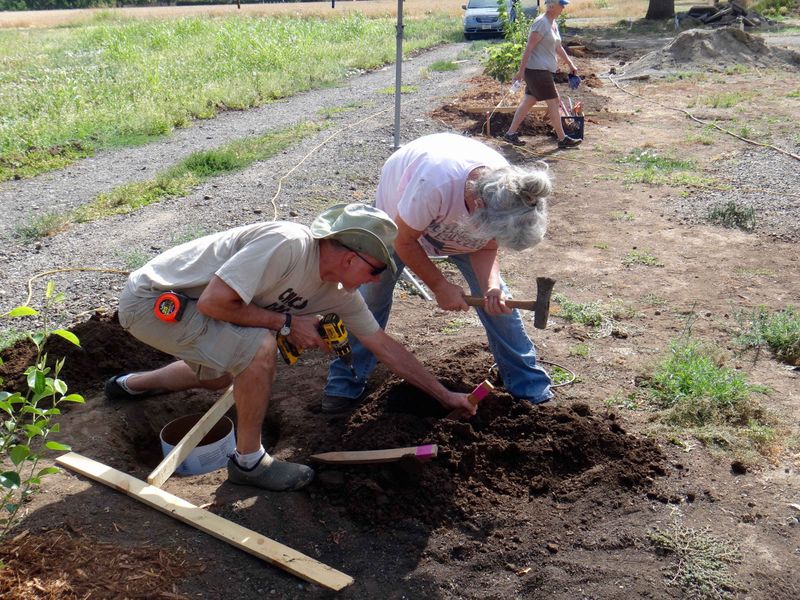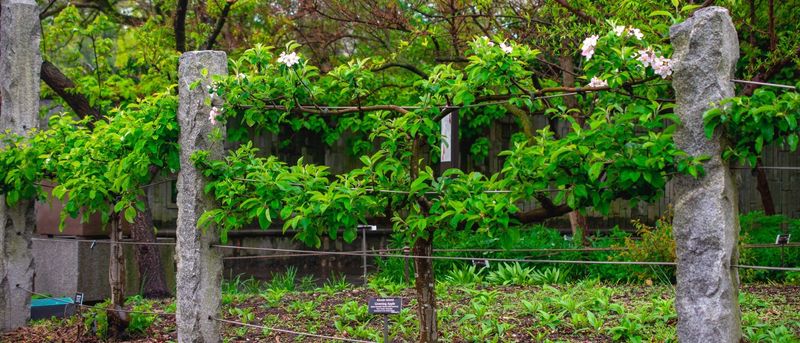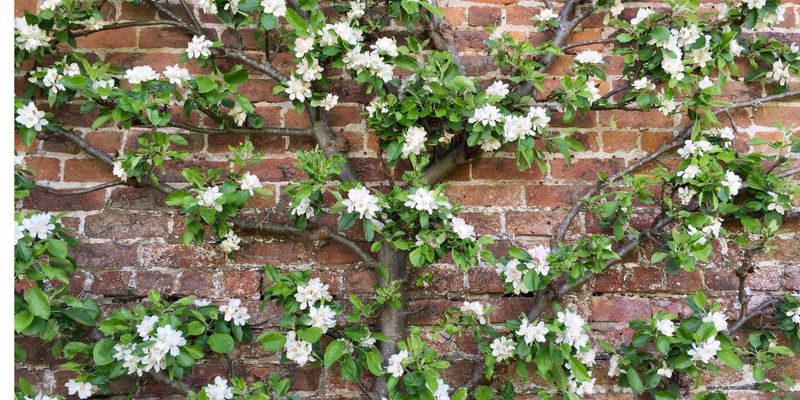Espaliering is a horticultural practice of training trees and plants to grow flat against a support. This method not only maximizes space, especially in small gardens, but also adds a decorative element to the landscape.
By using espalier, gardeners can enjoy the benefits of fruit-bearing trees and aesthetically pleasing plant arrangements even in confined areas.
1. Choose the Right Plant
Selecting the right plant for espaliering is crucial. Apple and pear trees are popular choices due to their flexible branches and fruit-bearing capabilities. Camellias, with their lush foliage and vibrant blooms, are excellent for ornamental purposes.
While choosing, consider the plant’s growth habit to ensure it suits the espalier style you envision. Opt for species known for their adaptability and resilience. Understanding these characteristics will guide you in making the best choice for successful espaliering.
2. Pick the Perfect Location
Location is key in espaliering. Plants thrive with plenty of sunlight, so choose a spot that receives ample natural light throughout the day. Proper air circulation is equally important to prevent fungal diseases and ensure healthy growth.
Evaluate the space to allow for the plant’s lateral growth without obstruction. This planning helps in maintaining the plant’s health and maximizing its visual appeal.
Remember, the right location can significantly impact the success of your espaliered plants.
3. Select an Espalier Pattern
Espalier offers a variety of patterns to choose from. The horizontal cordon is a classic choice, creating clean lines with its structured form. The fan pattern allows for a more natural look, suitable for a softer visual effect.
For those seeking a decorative touch, the Belgian fence presents an intricate and appealing design. Each pattern serves a different aesthetic and functional purpose, so select one that aligns with your garden’s theme and your personal preference.
4. Install a Sturdy Support System
A solid support system is essential for espalier success. Trellises, wires, and wooden frames are popular options, each offering stability and guidance for the growing plants. Ensure the support is sturdy enough to bear the weight as the plant matures.
Correct installation at the start can save time and effort later, providing a reliable structure for training branches. Use weather-resistant materials to ensure longevity. This foundational step is vital for maintaining the espalier’s form and function over time.
5. Plant at the Right Time
Timing plays a crucial role in espalier planting. Typically, late winter to early spring is ideal for planting most trees and shrubs. This timing allows plants to establish roots before the growing season.
Consider your specific climate and region, as planting times can vary. Adjust accordingly to ensure the best growth conditions.
By planting at the right time, you set your plants on a path to robust health and optimal development, making this an important strategic move.
6. Properly Space Your Plants
Adequate spacing between plants is vital for espaliering. This ensures that each plant has sufficient room to grow and spread laterally without competition. Measure the distance based on the mature size of the plant and the pattern chosen.
Proper spacing facilitates better air circulation and sunlight exposure, promoting healthier growth. It also allows for easier maintenance and harvesting if fruit-bearing plants are involved.
Thoughtful spacing is a simple yet effective way to enhance the success of your espalier efforts.
7. Train Young Branches Early
Training young branches early is essential for achieving desired shapes. Begin by gently guiding them along the support structure, adjusting as needed to maintain the pattern.
Use soft ties to secure branches without causing damage. Regular checks and adjustments will help in shaping the plant as it grows, ensuring it follows the chosen espalier design.
Early training sets the stage for the plant’s future growth and form, making it a critical step in the process.
8. Regular Pruning is Key
Pruning is a fundamental aspect of maintaining espaliered plants. Regular trimming of branches helps maintain the desired shape and size, encouraging optimal growth and health.
Focus on removing excess growth and dead or damaged branches. This practice not only enhances aesthetics but also improves air circulation and sunlight exposure to vital parts of the plant.
Consistent pruning is an ongoing commitment that ensures your espalier remains a striking feature in your garden.
9. Secure Branches Without Damage
Using the right materials to secure branches is crucial. Opt for soft, flexible ties that provide support without cutting into the bark. Materials like rubber or soft cloth are ideal.
Avoid using materials that can constrict growth or cause injury to the branches. Regularly check and adjust ties as the plant grows to prevent damage.
By securing branches properly, you ensure the health and aesthetic of your espaliered plants, contributing to their long-term success.
10. Provide the Right Soil and Nutrients
The right soil and nutrients are foundational for healthy espalier growth. Rich, well-drained soil ensures adequate water retention and root development. Enhance with organic matter to boost nutrient availability.
Regularly apply balanced fertilizers to support growth, tailored to the specific needs of your plants. Monitoring soil health and nutrient levels is key to maintaining vibrant, productive espaliered plants.
This holistic approach supports sustained growth and vitality.
11. Protect Against Pests and Diseases
Defense against pests and diseases is vital for espaliered plants. Encourage beneficial insects like ladybugs, which naturally control pests. Regularly inspect plants for signs of disease or infestation.
Implement natural solutions, such as neem oil or insecticidal soap, to address issues. Preventative care, including maintaining plant health and cleanliness, reduces vulnerability to problems.
A proactive approach ensures your plants remain healthy and flourishing.
12. Be Patient and Consistent
Espaliering requires patience and consistency. The process takes time, but the results are rewarding. Regular maintenance and care are essential for long-term success.
Stay committed to your espalier efforts, adjusting techniques as necessary. Over time, your dedication will result in beautifully sculpted and thriving plants. Embrace the journey and enjoy the unique beauty espalier adds to your garden.
